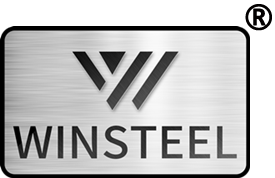Austenitic stainless steel: stainless steel with austenitic structure at room temperature. When the steel contains about 18% Cr, 8% ~ 10% Ni and 0.1% C, it has stable austenite structure. Austenitic chromium nickel stainless steel includes the famous 18Cr-8Ni steel and the high Cr Ni series steel developed by increasing the content of Cr and Ni and adding Mo, Cu, Si, Nb, Ti and other elements. Austenitic stainless steel is non-magnetic and has high toughness and plasticity, but its strength is low. It can not be strengthened by phase transformation, but only by cold working. If s, CA, Se, TE and other elements are added, it has good machinability. In addition to being resistant to oxidizing acid medium corrosion, this kind of steel can also be resistant to sulfuric acid, phosphoric acid, formic acid, acetic acid, urea and other corrosion if it contains Mo, Cu and other elements. If the carbon content of this kind of steel is less than 0.03% or contains Ti and Ni, its intergranular corrosion resistance can be significantly improved. Austenitic stainless steel with high silicon has good corrosion resistance with concentrated nitric acid. Austenitic stainless steel has been widely used in all walks of life because of its comprehensive and good comprehensive properties.
Ferritic stainless steel: stainless steel dominated by ferritic structure in use. The chromium content is 11% ~ 30%, with body centered cubic crystal structure. This kind of steel generally does not contain nickel, and sometimes contains a small amount of Mo, Ti, Nb and other elements. This kind of steel has the characteristics of high thermal conductivity, low expansion coefficient, good oxidation resistance and excellent stress corrosion resistance. It is mostly used to manufacture parts resistant to atmospheric, steam, water and oxidizing acid corrosion. This kind of steel has some disadvantages, such as poor plasticity, obvious reduction of plasticity and corrosion resistance after welding, which limits its application. The application of out of furnace refining technology (AOD or VOD) can greatly reduce the interstitial elements such as carbon and nitrogen, so this kind of steel is widely used.
AUSTENITIC FERRITIC duplex stainless steel: it is a stainless steel with about half of austenite and half of ferrite. When the content of C is low, the content of Cr is 18% ~ 28%, and the content of Ni is 3% ~ 10%. Some steels also contain Mo, Cu, Si, Nb, Ti, N and other alloy elements. This kind of steel has the characteristics of both austenitic and ferritic stainless steel. Compared with ferrite, it has higher plasticity and toughness, no room temperature brittleness, significantly improved intergranular corrosion resistance and welding performance. At the same time, it also maintains the 475 ℃ brittleness, high thermal conductivity and Superplasticity of ferritic stainless steel. Compared with austenitic stainless steel, it has high strength and significantly improved resistance to intergranular corrosion and chloride stress corrosion. Duplex stainless steel has excellent pitting corrosion resistance and is also a nickel saving stainless steel.
Martensitic stainless steel: stainless steel whose mechanical properties can be adjusted by heat treatment. Generally speaking, it is a kind of hardenable stainless steel. The typical brand is Cr13 type, such as 2Cr13, 3Cr13, 4Cr13, etc. The hardness after heating is high, and different tempering temperatures have different strength and toughness combinations. It is mainly used for steam turbine blades, tableware and surgical instruments. According to the difference of chemical composition, martensitic stainless steel can be divided into martensitic chromium steel and martensitic chromium nickel steel. According to the different structure and strengthening mechanism, it can also be divided into martensitic stainless steel, martensitic and semi austenitic (or semi martensitic) precipitation hardening stainless steel and maraging stainless steel.
